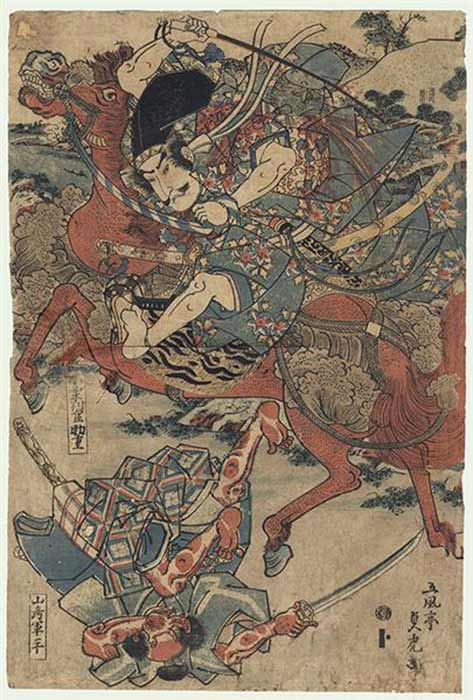
Hotdogs, Hamburgers And Humans On The Menu For Carnivorous Horses
An article in the magazine The Horse entitled Carnivorous Horses by Dr Sue McDonnell in which she described horses killing and devouring other animals, spurred some letters to the editors from readers who had themselves witnessed some odd horse behavior. They related that a horse grabbed a goat with its teeth, shook it to death, and started tearing it apart and consumed the meat. Three other horses also joined in and started tearing the goat’s flesh and eating it. One man wrote, “They all grabbed some part of the goat with their teeth and tore it to pieces with all the tugging and pulling. The one that killed the goat had the biggest part of what was left… Soon, two little colts less than three months old came over to what was left and took some bites….standing there chewing and eating… My friend and I were absolutely stunned over what we had just witnessed.” This may sound like an isolated, strange incident, but there is evidence of meat-eating horses all over the world, and historically (even in ancient times), it was common knowledge that certain horses regularly ate meat and hunted for their meals.

Alexander on Bucephalus at the battle of Issos. Alexander Sarcophagus, Istanbul Archaeological Museum. (CC BY-SA 3.0)
Carnivorous Horses In Greek Mythology
First, such horses show up in worldwide myths and legends. The Greek King Diomedes had four horses, Deinos, Xanthos, Podargos, and Lampon who feasted on the flesh of humans who entered the kingdom, and Hercules was tasked with finding some horses who routinely murdered humans and bringing them back to Greece. While he was away fighting, the horses killed and ate his companion Abderos. Alexander the Great tamed the meat-eating horse Bucephalus and later presented it to King Philip, who confined the horse to an iron cage upon realizing that it had murdered and ate human beings. Disloyal subjects were thrown into the cage with the horse, where they were subsequently devoured. Supposedly, when Alexander later visited the animal, he was horrified to see “the remains of the numerous men it had slaughtered.”

Oguri Hangan Sukeshige and Yamasaki by Utagawa Sadatora. (Edo Period) Museum of Fine Arts, Boston (Fair Use)
Onikage The Legendary Man-Eating Horse In Japan
In Sagami Prefecture, Japan, a legendary horse was called Onikage, or “shadow demon,” and it was known as a vicious horse that ate human flesh after trampling his victims to death. This horse was a major character in a legend involving the warrior Oguri Hangan (c. 1398-1464), who supposedly rode the beast. Regarding this famous tale, Matisoff wrote the following: “The earliest hint of the existence of a heroic oral narrative about the travails and ultimate survival of a man named Oguri appears in Kamakura Ozoshi, a late medieval military chronicle of uncertain authorship and date, also popularly known by the alternate title Taiheikoki. Over time, due to the skills of storytellers of various sorts, Oguri’s life story developed into a tale that survives today as the greatest example of late medieval - early Edo orally derived narrative.”
His official name was Fujiwara no Masakiyo, known as Sukeshige, and he was the Lord of Oguri Castle in Hitachi (hence his moniker Oguri). According to the existing tales, he fell in love with a princess named Terute and sent her letters, to which she replied confirming that she also loved him. Upon learning this, he went to her father’s castle and asked for his permission to marry her. For reasons that are unclear, the father agreed that Oguri could marry Terute, but he secretly had a different plan. He wanted the samurai lord dead, but he decided to make it look like an accident by tricking him into approaching his murderous horse Onikage. Pretending he approved of the marriage, he hosted a feast, at the end of which he asked Oguri about his skills in front of the other samurai and nobles who were therein assembled. Oguri told them all about his skill with the bow and arrow, bladed weapons, and other feats which required strength or speed, (and while he did not mention it that evening, Oguri was known as one of the best riders in all of Japan). Terute’s father mentioned the horse that he had just purchased and said that the animal needed to be tamed by a good rider. Oguri agreed to help him, and the lord took him to the prison-like boundaries that enclosed the horse, consisting of a moat around a large corral made of large tree trunks: so large that each one required the lifting and maneuvering of more than 80 men to put them into place. These were further supported by smaller trunks that were nevertheless still imposing insofar as their size and strength.

Miniature sculpture of Oguri on Onikage (1800) Museum of Far Eastern Antiquities in Sweden. (Catasa/ CC BY-SA 3.0)




